Before getting braids, know that they require proper maintenance and can cause tension on your scalp, potentially leading to hair damage. Braids, a popular hairstyle choice, can be a convenient and stylish option; however, it’s essential to be aware of a few key factors before getting them done.
This article will highlight some crucial things you should know before going ahead with braids, providing you with the necessary information to make an informed decision.
From the maintenance required to the potential impact on your scalp and hair, understanding these aspects will help you ensure a positive experience with your braided hairstyle.
So, let’s dive in and learn what you need to know about getting braids.
4 Things You Should Know Before Getting Braids
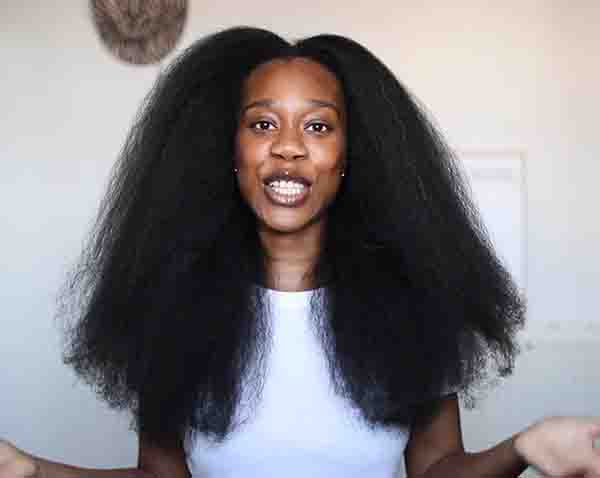
1. Choosing the Right Braids
Consider hair type, length, and thickness when choosing braids. Matching your hair type with the right style ensures a better outcome.
2. Maintenance Level
Understand the maintenance level of your chosen braids. Some styles require more upkeep than others. Be prepared for the commitment.
3. Pros and Cons
Know the advantages and disadvantages of different braid types. Each style has its unique features and considerations.
4. Informed Decision
Before getting braids, whether you have short, long, thin, or thick hair, research and consult a professional hairstylist for guidance. Tailor your choice to your unique hair needs.
how to know if your hair is ready for braids
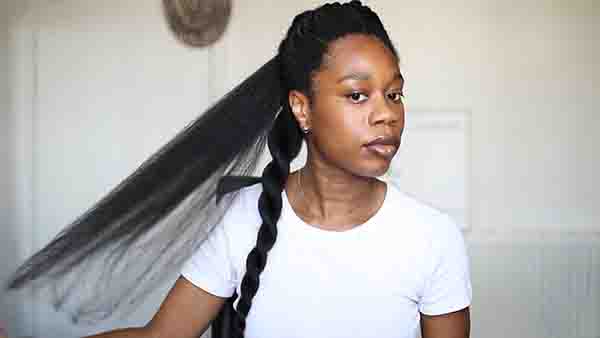
Determining if your hair is suitable for braids involves considering various factors related to your hair’s length, health, and texture. Here’s how to know if your hair is ready for braids:
a. Length
Braids are typically easier to create on hair that is at least shoulder length or longer. Longer hair provides more versatility and options for braiding styles.
b. Hair Health
Healthy and strong hair is more suitable for braids, as it can withstand the manipulation and tension involved in braiding. If your hair is damaged, prone to breakage, or has significant issues, it’s advisable to consult with a hairstylist before getting braids.
c. Texture
Braids can be achieved on a variety of hair textures, including straight, wavy, and curly. However, the texture of your hair may influence the braiding technique and products used. Curly or coily hair, for example, may require more moisture and care during the braiding process.
d. Consult a Professional
It’s always a good idea to seek guidance from a professional hairstylist. They can assess your hair’s specific condition and type and provide personalized recommendations. A hairstylist can also help you choose the most suitable braiding style based on your hair’s characteristics.
e. Consider Protective Styling
If your hair is in a fragile state or requires extra care, consider protective styling options like box braids, cornrows, or twists. These styles can help protect your natural hair while promoting growth and minimizing damage.
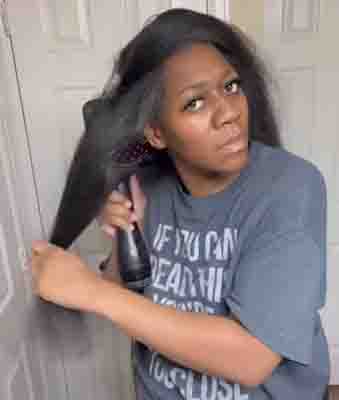
Let’s take a look at some must-know steps to follow before getting braids
A. Pre-Braids Hair Care
Preparing your hair properly before getting braids is crucial to maintain its health and ensure that your braids look and feel their best.
1. Detangling
Before you start the braiding process, make sure your hair is completely detangled. This helps prevent knots and tangles that can lead to breakage during braiding.
2. Nourish and Strengthen
Begin by nourishing and strengthening your hair. Use high-quality hair products that are rich in natural oils and nutrients to promote hair health. This step is particularly important if your hair is damaged or prone to breakage.
3. Hydrate Your Locks
Proper hydration is essential to prevent dryness and maintain the moisture balance in your hair. Use a moisturizing conditioner and consider using a leave-in conditioner to keep your locks hydrated.
4. Healthy Scalp
A well-moisturized scalp is the foundation of healthy hair. Massaging your scalp with nourishing oils can stimulate blood flow and promote hair growth. It also helps to minimize breakage at the roots.
5. Avoid Excessive Heat
Limit the use of heat-styling tools like flat irons and curling irons. Excessive heat can weaken your hair and make it more susceptible to damage. If you do use heat styling tools, always use a heat protectant spray.
6. Deep Conditioning
Consider incorporating deep conditioning treatments into your routine. These treatments can improve your hair’s strength and elasticity, making it more resilient to the tension of braiding.
7. Protective Hairstyles
Prioritize protective hairstyles before getting braids. This can help minimize manipulation and reduce stress on your strands. Options include loose twists, buns, or simple ponytails.
8. Avoid Excessive Manipulation
Excessive manipulation of your hair can lead to breakage. Avoid tight ponytails or braids in the days leading up to your appointment.
9. Regular Trimming
Regularly trim your hair to remove split ends. This not only promotes healthier growth but also ensures that your braids look neat and tidy.
10. Consult a Professional
If you have any doubts or concerns about your hair’s condition, consult a professional hairstylist. They can assess your hair’s needs and provide personalized recommendations.
B. Safety Precautions for Getting Braids
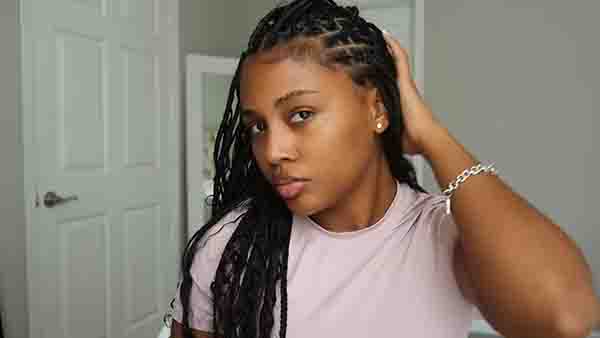
While getting braids can be an exciting choice, it’s essential to consider potential health and safety concerns to ensure a positive experience.
1. Scalp Sensitivity and Allergic Reactions
Before getting braids, assess your scalp sensitivity and potential allergies. Be aware of any reactions to materials or products used in the braiding process.
2. Hair Damage and Hair Loss
Ensure that the braids are not too tight or heavy, as this can strain hair follicles and lead to breakage or permanent damage. Discuss your preferences with the stylist to avoid excessive tension.
3. Cleanliness and Sanitation
Choose a salon or stylist who adheres to high cleanliness and sanitation standards. Ensure that all tools and products used are clean and safe.
4. Proper Aftercare
Follow the stylist’s aftercare instructions to maintain the health and longevity of your braids. This includes regular maintenance and moisturizing to prevent dryness and breakage.
5. Regular Check-Ins
During the braiding process, communicate with your stylist about comfort levels and any concerns you may have. Address any issues promptly to avoid complications.
6. Choosing a Skilled Stylist
Select an experienced and skilled stylist who has a good reputation for creating quality braids. Look for reviews and ask for recommendations.
7. Avoid Excessive Weight
Choose braid styles that are appropriate for your hair type and length. Excessive weight can cause stress on your hair and scalp.
8. Time Considerations
Be mindful of the time it takes to get your braids done. Prolonged periods of braiding can increase the risk of discomfort or complications.
9. Prioritize Your Comfort
Your comfort and well-being should be a top priority. If you experience excessive pain, discomfort, or any unusual reactions during the braiding process, don’t hesitate to speak up and seek assistance.
C. Maintaining Braids: Washing and Conditioning
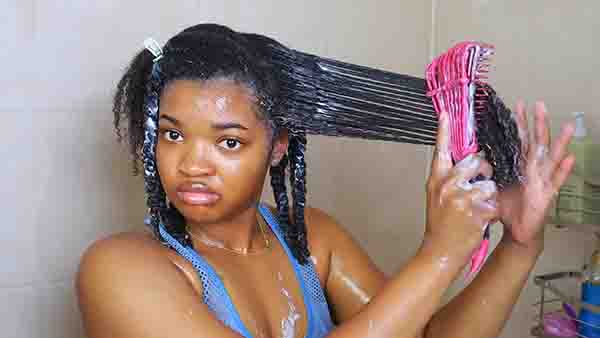
Proper washing and conditioning are essential for preserving the health and longevity of your braids. Here’s how to care for your braids while keeping them clean and healthy:
1. Gentle Scalp Cleansing
To maintain a clean scalp, use a diluted shampoo or watered-down cleanser. Gently massage it into your roots, being careful not to disturb the braids themselves.
2. Lightweight Conditioning
Choose a lightweight conditioner that won’t leave residue or weigh down your hair. Apply it along the lengths of your braids to keep them moisturized.
3. Leave-in conditioner or Oil
For added moisture, apply a leave-in conditioner or oil at the scalp and along the lengths of your braids. This helps prevent dryness and keeps your hair looking fresh.
4. Minimize Itchiness
Avoid heavy products that can lead to itchiness. Keeping your scalp moisturized is essential for comfort.
5. Duration of Braids
The length of time you can keep your braids in depends on various factors, including your hair type, growth rate, and the condition of your natural hair. Pay attention to any discomfort or damage, and consult a professional if needed.
D. Braids: Removal and Post-Braiding Care
While braids can be a stylish and convenient hairstyle, it’s essential to consider removal and post-braiding care to maintain healthy hair. Here are some key points to keep in mind:
1. Safe Removal
When removing braids, use safe and gentle techniques to avoid breakage and damage. Harsh removal methods can harm your hair.
2. Restore and Repair
After removing the braids, prioritize restoring and repairing your hair. Deep conditioning treatments and regular trims can help bring your hair back to its best condition.
3. Proper Hair Care
To prevent breakage and damage, follow proper hair care practices. Moisturize your hair regularly, protect it at night with a satin bonnet or scarf, and avoid tight hairstyles that can cause tension.
4. Patience
Be patient with your hair’s recovery process. It may take some time for your hair to regain its natural strength and elasticity.
The Importance of Keeping Your Braids Fresh
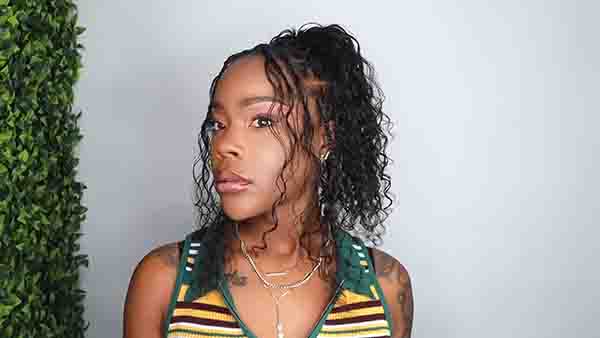
Maintaining fresh braids is crucial for several reasons, and using the right products can offer numerous benefits:
- Longevity: Proper care and the use of specific products help extend the life of your braids, keeping them looking great for a longer duration.
- Moisturization: Using products like mousse, edge control, and oil sheen helps keep your braids moisturized, which is essential for those with dry or brittle hair.
- Frizz Prevention: These products also help prevent frizz, ensuring your braids remain neat and tidy.
- Overall Health: Investing in the right products for your braids contributes to the overall health and appearance of your hair.
Now, let’s delve into the significance of some specific products for braided hair:
Mousse for Braids: Mousse provides a firm hold, ensuring your braids stay fresh and intact for extended periods. It also allows for creating intricate braid designs, adding a unique touch to your hairstyle.
Edge Control: Edge control products tame and smooth down baby hair and flyaways along your hairline, giving your braids a polished and well-groomed look.
Oil Sheen: Oil sheen adds shine and moisture to braided hair, preventing it from appearing dull and dry. Choosing the right oil sheen products for braids is essential for maintaining their freshness.
Hair Bonnet: A hair bonnet protects and preserves your braids by shielding them from dust, moisture, and friction. Choosing the right bonnet ensures that your braids stay secure and in place while you sleep.
What not to do before getting braids
Before getting braids, there are certain things you should avoid to ensure the best results and maintain the health of your hair and scalp. Here’s a list of what not to do before getting braids:
1. Don’t Skip a Consultation
Discuss your hair type, desired braid style, and any concerns you may have. This will help you and your stylist determine if braids are suitable for your hair and what type of braids would work best.
2. Don’t Skip Hair Maintenance
Continue to wash and condition your hair regularly to keep it clean and healthy.
3. Avoid Heat Styling
Refrain from excessive heat styling such as straightening, curling, or blow-drying your hair in the days leading up to your braid appointment. Heat can weaken your hair and make it more prone to breakage.
4. Don’t Use Harsh Chemicals
Avoid using harsh chemical treatments, such as relaxers or perms, on your hair before getting braids. These chemicals can weaken your hair and make it more susceptible to damage.
5. Don’t Get Braids on Extremely Damaged Hair
If your hair is severely damaged or fragile, it’s not advisable to get braids. Braids can add tension to your hair, and if it’s already compromised, it may lead to further damage.
6. Avoid Tight Hairstyles
Refrain from wearing tight hairstyles like tight ponytails or braids in the days leading up to getting your braids. Tight hairstyles can put extra stress on your hair and scalp, which may lead to discomfort and even hair loss.
7. Don’t Neglect Your Scalp
Keep your scalp clean and moisturized before getting braids. A healthy scalp is essential for the longevity of your braids and the health of your hair.
8. Don’t Overload with Hair Products
Avoid using excessive styling products, oils, or heavy conditioners right before getting braids. These can create buildup on your scalp and make it difficult for the braids to grip your natural hair.
9. Don’t Rush the Process
Plan ahead and give yourself enough time for the braiding process. Rushing can lead to discomfort and may not result in the desired outcome.
What not to do after getting braids
After getting braids, there are a few important things to keep in mind to ensure the longevity and health of your hairstyle. Here are some things you should avoid doing:
- Avoid excessive manipulation: Once you have your braids, it’s best to leave them alone as much as possible. Constantly touching, pulling, or playing with your braids can cause them to unravel or become frizzy. So, resist the temptation to constantly fiddle with them.
- Skip the harsh products: Harsh hair care products can be damaging to your braids and scalp. Avoid using products with alcohol, sulfates, or heavy oils as they can dry out your hair and weigh down your braids. Instead, opt for lightweight, moisturizing products specifically designed for braided hairstyles.
- Say no to heat styling: Using heat styling tools like flat irons or curling irons on your braids can lead to damage and weaken the hair strands. It’s best to embrace the natural texture of your braids and avoid applying any direct heat.
- Avoid excessive moisture: While it’s important to keep your scalp and hair moisturized, over-moisturizing can cause your braids to become frizzy and lose their shape. Be mindful of how much moisture you apply and opt for lightweight, water-based moisturizers that won’t weigh down your braids.
- Don’t neglect your scalp: Even though your hair is braided, it’s essential to keep your scalp clean and healthy. Gently cleanse your scalp regularly using a diluted shampoo or a specialized scalp cleanser. Remember not to scrub too vigorously as it may disturb the integrity of your braids.
- Don’t keep them in for too long: Braids are a protective hairstyle, but keeping them in for an extended period can lead to damage or breakage. It’s generally recommended to keep braids in for 6-8 weeks to prevent tension on your hair and scalp. After that, give your hair a break before getting a new set of braids.
How To Kill Six Hours While You’Re Getting Your Hair Braided
Spending six hours at the salon for a hair braiding session can be a significant chunk of time. Here are various ways to make the most of those hours:
1. Entertainment Options:
- Read or Listen: Bring a book or download a podcast to immerse yourself in a captivating story.
- Mobile Games: If you enjoy gaming, bring your smartphone or tablet for some mobile gaming.
- TV Shows: Catch up on your favorite TV shows by streaming them on your device.
2. Relaxation and Self-Care:
- Spa Treatments: Indulge in relaxation with a spa treatment or facial to pamper yourself.
- Nail Art: Get creative with nail art designs or a manicure.
- Nap: Take a power nap to recharge.
- Mindfulness: Practice mindfulness meditation for inner peace and serenity.
3. Socialize and Connect:
- Social Media: Catch up on social media and interact with friends and family.
- Conversations: Engage in conversations with the braider and other clients, building connections.
- Online Games: Play online multiplayer games with friends or explore new gaming apps.
4. Learn and Grow:
- Educational Content: Listen to educational podcasts or watch informative videos.
- Language Learning: Explore a new language through language learning apps or audiobooks.
- Online Courses: Take online courses or skill-based training to enhance your knowledge.
8. Seek Inspiration and Motivation:
- Motivational Content: Tune into motivational speeches, TED Talks, or content that ignites your passion.
- Art and Creativity: Explore photography portfolios and artwork online.
- Mindset Development: Engage in journal prompts, gratitude exercises, and personal growth activities.
FAQ
Before getting braids, make sure your hair is clean, well-conditioned, and free of any tangles or knots. Consider washing and deep conditioning your hair a day or two before your appointment. Also, decide on the braid style you want and gather any accessories or extensions if needed.
When showering with braids, it’s best to use a shower cap or wrap your braids in a protective covering to prevent them from getting excessively wet. Avoid hot water, as it can loosen the braids. Use a sulfate-free shampoo and focus on your scalp while being gentle to avoid frizz or unraveling.
After getting braids, you should take proper care of them by moisturizing your scalp and braids regularly. You can use a lightweight, oil-based moisturizer or a braiding spray. Also, avoid excessive manipulation or tension on the braids to maintain their longevity.
To keep your braids looking fresh, regularly moisturize your scalp and braids, protect them while sleeping with a satin or silk scarf or bonnet, and avoid activities that may cause friction or unraveling. Additionally, you can use a braiding spray to maintain a neat appearance.
Yes, you can wash your hair with braids, but it’s important to do so gently to avoid frizz or unraveling. Focus on your scalp while shampooing and use a sulfate-free shampoo. Rinse thoroughly, and be cautious not to soak the braids excessively.
Before getting braids, you can apply a lightweight oil or hair moisturizer to your scalp and hair to ensure they are well-conditioned and hydrated. This can help protect your hair during the braiding process.
Yes, it’s a good idea to deep condition your hair a day or two before getting braids. This helps to ensure your hair is well-moisturized and in good condition before the braiding process.
Yes, moisturizing your braids is essential to keep them looking fresh and to prevent dryness or itchiness of the scalp. You can use a lightweight braiding spray or oil-based moisturizer for this purpose.
Washing your hair a day or two before getting braids is advisable. This ensures that your scalp and hair are clean and free of any product buildup, making the braiding process smoother.
Yes, you can shower after getting braids, but it’s important to protect them from excessive moisture. Use a shower cap or wrap your braids in a protective covering to prevent them from getting wet.
You can shower with braids, but it’s best to take precautions to protect them from getting too wet. Use a shower cap or cover your braids with a plastic bag to shield them from excess moisture.
You can typically wait at least 1-2 weeks before washing your braids, depending on your hair type and scalp condition. It’s essential to avoid excessive moisture immediately after getting braids to allow them to set properly.
Both shampooing and conditioning are important for maintaining braids. Shampoo your scalp gently to remove dirt and buildup, and then condition to keep your hair and scalp moisturized.
When getting braids, expect the process to take several hours, depending on the style and your hair’s length and thickness. You may experience some initial tightness or discomfort, but it should subside as your scalp adjusts. Aftercare involves regular moisturizing and protective measures to maintain the braids.
Hair shedding is a normal process, and you may notice some hair strands coming out after getting braids. However, excessive hair loss or breakage can occur if the braids are too tight or if you don’t take proper care of them. It’s essential to choose a skilled stylist and follow a good aftercare routine to minimize hair loss.
Conclusion
Before getting braids, it’s important to consider a few key factors. Firstly, understanding the maintenance requirements will help you determine if you’re prepared for the commitment. Secondly, choosing the right stylist who specializes in braiding techniques is crucial to achieving the desired result.
Thirdly, conducting thorough research on the type of braids you want will ensure they suit your hair type and lifestyle. Additionally, keeping your scalp and hair healthy before and during the braiding process is essential to prevent damage. Lastly, setting realistic expectations and being patient with the braiding process will help you embrace the transformation fully.
By keeping these things in mind, you’ll be well-prepared and informed before embarking on your braiding journey. Remember, braids can be a stylish and versatile protective hairstyle, but it’s important to approach them with the right knowledge and care.

